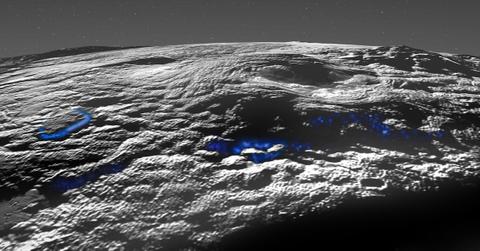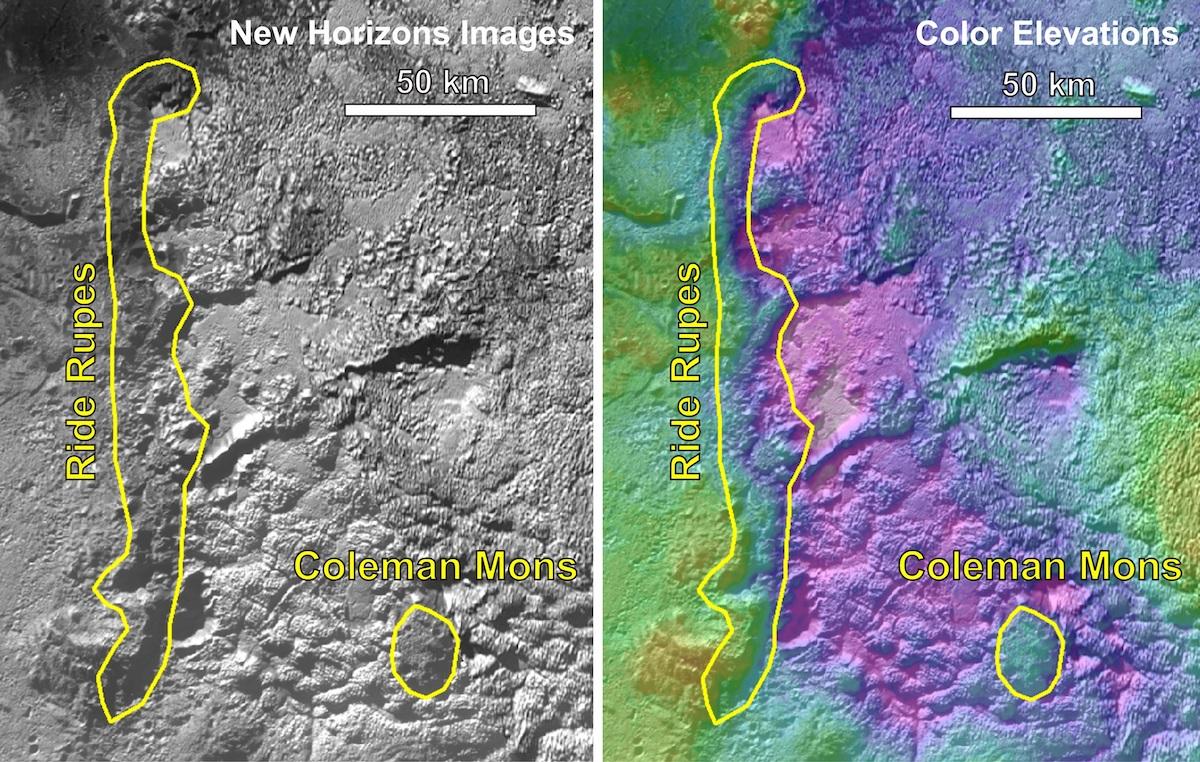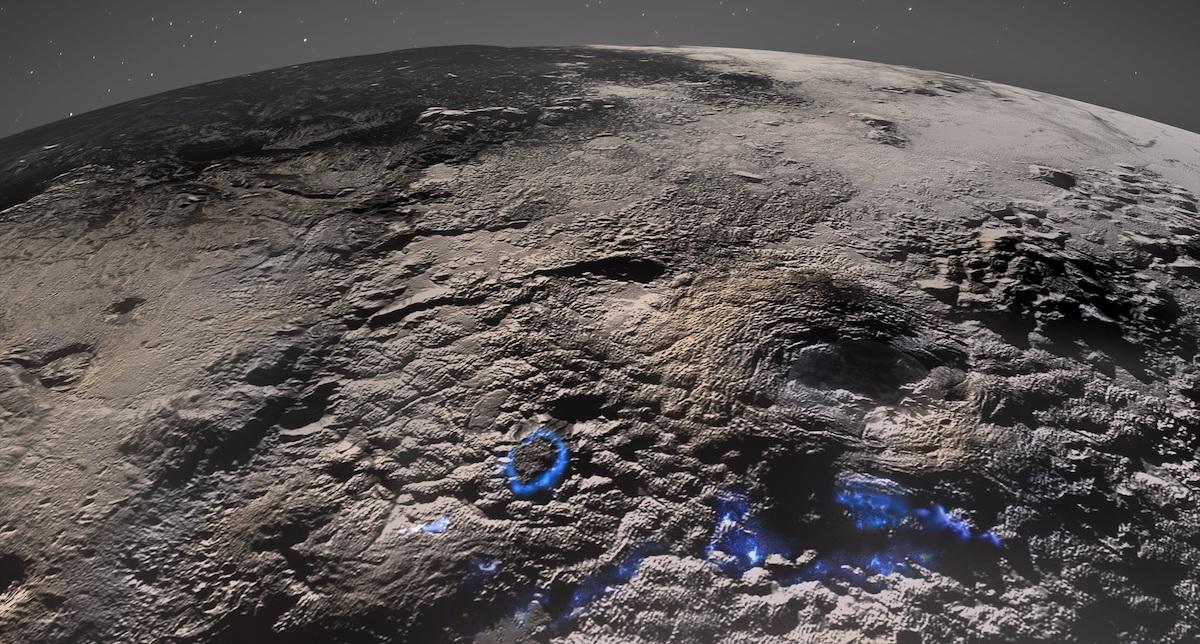Ice Volcanoes Have Been Discovered on Pluto — Does This Mean the Dwarf Planet Could Sustain Life?
Published March 30 2022, 5:17 p.m. ET

The region studied lies southwest of Pluto’s “heart,” Sputnik Planitia, and contains multiple large domes and rises up to 7 kilometers (about 4 miles) tall and 30 to 100 kilometers (18 to 60 miles) across, with interconnected hills, mounds, and depressions covering the sides and tops of many of the larger structures.
If you have stood by Pluto’s side ever since it was demoted from planet to dwarf planet in 2006, perhaps Pluto’s latest news will interest you. Researchers have just discovered ice volcanoes on Pluto, something that possibly signifies Pluto isn’t as cold of a place as previously believed.
Not only that, but this news actually provides a shred of hope that the dwarf planet could one day sustain life.
Keep reading for everything you need to know about these exciting new findings.

The elevation values in this region range more than 8 kilometers (nearly 5 miles) from the highest areas in red/orange to the lowest areas in pink/white.
Ice volcanoes have been discovered on Pluto.
A study published in the journal Nature Communications analyzed data images captured by NASA’s New Horizons spacecraft. The images were taken back in 2015, when New Horizons became the first spacecraft to ever visit Pluto up close; the researchers behind this new study looked at these images along with more recent images of Pluto.
This study used the data gathered over the past seven years to look into one unique region of Pluto’s surface, which appears to be filled with irregular surfaces made up of massive rises and craters. The researchers believe that there is nowhere else quite like it anywhere else in the solar system.
These are examples of cryovolcanism, and can potentially be referred to as “ice volcanoes,” according to a press release by the Southwest Research Institute.
“The particular structures we studied are unique to Pluto, at least so far,” Dr. Kelsi Singer, lead author and Southwest Research Institute scientist, said in a statement. “Rather than erosion or other geologic processes, cryovolcanic activity appears to have extruded large amounts of material onto Pluto’s exterior and resurfaced an entire region of the hemisphere New Horizons saw up close.”
Essentially, the researchers believe that this “field of very large icy volcanoes” (as Singer referred to it, as per CNN) came from material below Pluto’s surface erupting.

The surface and atmospheric hazes of Pluto are shown here in greyscale, with an artistic interpretation of how past volcanic processes may have operated superimposed in blue.
Pluto's ice volcanoes indicate a small possibility of the dwarf planet being able to sustain life.
Interestingly, the researchers were able to determine these terrains to be fairly young, which indicates that Pluto’s interior structure held onto heat semi recently, which is what allowed “water-ice-rich materials” to erupt and land on Pluto’s surface.
It’s quite surprising, considering Pluto’s average temperature is -387 degrees Fahrenheit, as per NASA.
“This means Pluto has more internal heat than we thought it would, which means we don't fully understand how planetary bodies work," Singer said, according to CNN.
In addition to heat, the researchers believe that these ice volcanoes may indicate that Pluto’s subsurface ocean, thought to no longer exist, may actually still exist, with water potentially being relatively close to Pluto’s surface.
Even though Pluto is generally still far too cold to sustain life, these findings do make one wonder if Pluto could potentially support life one day. However, according to Singer, Pluto is nowhere near ready for that step. "There are still a lot of challenges for any organisms trying to survive there," she told the news outlet.
The International Astronomical Union approved Singer's proposals to name two of the largest structures in Pluto's cryovolcanic region, as noted by the Southwest Research Institure. One has been named Coleman Mons, after Bessie Coleman, who was the first Native American and African American woman to get a pilot’s license; the other has been dubbed Ride Rupes, named in honor of Sally Ride, who was the first American woman to visit space.
Green Matters’ new book, Green Living, is the perfect guide to living an eco-friendly lifestyle for people at every stage of the process. You can order Green Living here.